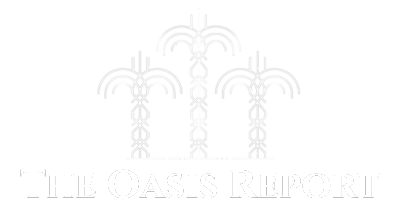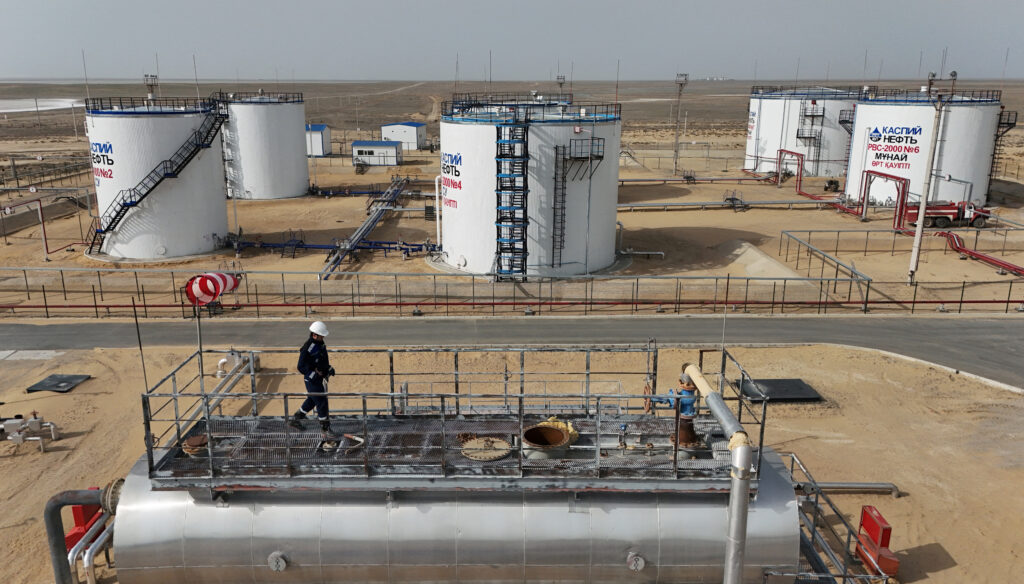It is hard to overstate just how dramatically, in the space of just over a month, global oil markets have been transformed.
Just before President Trump delivered his “Liberation Day” speech at the White House, most analysts were settling into the idea of prolonged supply restraint.
Opec+ – the oil alliance led by Saudi Arabia and Russia – was cautiously and gradually returning barrels in small monthly increments to rebalance markets knocked out of kilter by first the pandemic and then the war in Ukraine.
Now, with the second big injection of barrels back onto the market by Opec+ last weekend, we have confirmation that the strategy is no more.
Suddenly the talk among the more apocalyptic analysts is of all-out production by low-cost producers in a race to see who will be the last man standing.
That may be slightly hysterical, and Opec’s statement offered some valid explanations for the change of direction, pointing to “current healthy market fundamentals as reflected in the low oil inventories”.
Certainly inventories are below their five year average – the usual gauge of the market’s appetite for oil for storage.
The argument is that consumers will be glad of the opportunity to fill up the tanks at bargain prices, and China – the world’s biggest importer – has a track record of doing just that.
Opec also highlighted the fact that the measure will allow members to “accelerate their compensation” for past over-production. It is no secret that Iraq, Kazakhstan and (to a lesser degree) Russia have not stuck to earlier production quotas, and that Saudi Arabia is getting tired of playing that game.
But in terms of demand, it is a stretch to see how the current market can be regarded as anything but uncertain.
Global economic growth was recently downgraded by the International Monetary Fund, and nothing has significantly changed for the better in the Chinese economy that has been the biggest driver of demand growth.
Meanwhile, in the other big oil guzzler, the US, financial markets have regained some poise after “Liberation Day”, but nobody has yet called the end to the tariff panic that caused them to crash in the first place.
The damage to the American economy – and therefore oil demand – is still likely to be enormous, with no guarantee the Trump chaos will stop any time soon.
For these reasons, the Opec+ decision rattled traders. Goldman Sachs cut its forecasts for Brent crude to $60 for 2025, saying the Opec+ move was “a long-term equilibrium strategy aimed at maintaining internal cohesion and strategically regulating US shale amid relatively low inventories”.
The Brent crude price – already under pressure last week as rumours of the Opec+ decision seeped out – plunged to $59 per barrel in Asia on Monday morning, before staging a modest recovery, standing at just over $60 as American markets opened.
It is hard to see it moving any way but down in the coming months. There is another Opec+ meeting early next month, and the expectation is that a similar increase is on the cards.
A poll of traders and analysts by Dubai based consultancy Gulf Intelligence on Monday showed that 96 percent of respondents thought the entire package of voluntary cuts by the “Group of 8” within Opec+ would be unwound by the autumn. Already nearly 50 percent of the 2.2 million barrels overhanging the market for months has been returned.
That is an awful lot of oil to be back onto an uncertain global market, but there may be more going on than the market can see at the moment.
It is notable that this policy shift comes just ahead of a high-profile visit to Saudi Arabia by US President Donald Trump, who has shouted loud and clear that he wants more oil on global markets to tame domestic price inflation.
Saudi Arabia has made no secret of its broader ambitions. Under Vision 2030, it is reshaping not just its economy but also its global relationships.
Energy remains central to that project – as an essential revenue stream, but also as a strategic asset. As oil markets become more volatile, Riyadh sees its ability to regulate that volatility as part of its influence.
What comes next? That depends on how politics and energy diplomacy intersect in the months ahead. The Trump visit is likely to bring some of those threads into sharper focus.
What is clear is that this is not the end of the story. Opec+ has thrown the car into reverse, but is still behind the wheel.
Frank Kane is Editor-at-Large of AGBI and an award-winning business journalist. He acts as a consultant to the Ministry of Energy of Saudi Arabia



